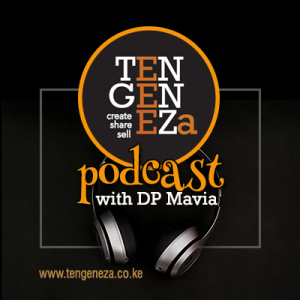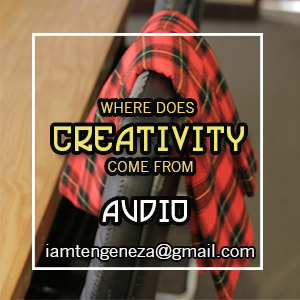Language:
What is language? It is the vehicle for communicating ideas to one another. It achieves this by use of segments called words. It is generally assumed that verbalizing beings need language to communicate. Words are only tools we use in translating ideas that we wish to communicate. This explains that we aren’t just trying to convey merely verbal sounds. When we want to speak to each other it is required that we learn each other’s language or speak in one language. A simple equation suffices
Idea + Words + Language = Communication
Language as Carrier of Ideas.
At the center of language is the transmission of ideas. We relate to our world by interpretation through sound and vision. This relating requires language. Our minds are patterned to interpret ideas and concepts through language, irrespective of whether the interpretation of our reality is sound or vision. By observation it is has come to my understanding that thoughts are sound and word related, while imagination is more visual or pictorial. Sometimes there is a thin line distinguishing between what we process visually and what we process through sound. Thoughts sometimes grope in form of voices in our hearts and heads. When it comes to imagination or forecasting or remembering an experience, then images come into play. Consciousness distinguishes humans from the rest of nature. It is this consciousness that is made communicable by language because of the human nature to relate or the human nature for relationship.
To vividly understand the role of language in transmission of ideas we ought to have in the forefront of this argument that, ideas or ideology can also be viewed as worlds or as some call it, a world views. Human beings consciously or unconsciously import foreign worlds into their own worlds through language. Some words or ideas whether they are economic, cultural or religious come with the weight to influence the way some people perceive the world. The obvious consequence of this assimilation is change of perception and generation of ideas then eventually the practice of a new reality which when turned into action becomes a lifestyle or a way of life.
Language User
Every person who communicates is a language user irrespective of what language he or she uses. In an environment where people verbalize their communication the concept of language can be categorized on the basis of its mastery or its priority of use. When I say priority of use I mean from growth to maturity or from simplicity to complexity people come into the world and are introduced to language. In fact for most speaking beings, language is a primary tool for growth, simply because points of realization or consciousness or worldviews are built in us or come to us by language.
1st and 2nd Language User
A first language user lays claim of the fact that the language he speaks is predominantly that of his birth, history and environment. A person born of Zulu parents who goes ahead to speak Zulu as his language is a first language Zulu user. He might eventually learn and master English and predominantly use it. This does not change a thing at all; he is still a first Zulu Language user and a second English language user.
Language as a Vehicle for Imagination.
Imagination is impossible without language or at least a form of communication. We think or process cognitive responses by language. Thoughts are the vehicles that make us picture contexts. They enable logical assessments and possible reactions. These thoughts then translate into speech for beings that verbalize. We have managed to codify them or assign them general accepted signs and speech meanings, which enable us to communicate. Language is the result of thoughts and verbalization on a primary level. Language has the capacity to borrow from other languages. When this happens it grows. The growth of language is directly proportional to the increase of its vocabulary. When a language has no word for a thing then it is limited. It means it cannot define the thing thus it cannot objectively analyze the thing in question. It is this capacity for vocabulary that put language users in a position to imagine or create images in their minds. We could safely say vocabulary enhances imagination. Vocabulary is not necessarily difficult words. So we think, verbalize. We verbalize by language whose capacity to capture extensive reality is based on vocabulary. The end result is imagination and image pictures that reveal at any one point our contexts.
Dominant Language (DL)
A dominant language is the one a person transacts in most or uses most. One thinks in the language he dominantly uses. One can be born of Swahili parents but has been exposed to English to the point where he uses it daily. The usage of English can interfere and even diminish the development of his first language Kiswahili. When it comes to that his Kiswahili vocabulary and fluency might diminish. English will, thus take the faculty that expresses language, and therefore English will become the Dominant Language. A dominant language will play a great role in interpreting our contexts.
The Interplay of Context and Language
A context can determine language switching. The temporal coup of a dominant language can occur when a user is in a context that requires another less dominant language. When Swahili person is in a context where he needs to speak Kiswahili yet his dominant language has become English unless he is very competent he will be limited in contextual interpretation due to dominant English usage in his day-to-day activities. Sometimes he will pause often in his speech to develop or recall coherent and logical construction of his speech. The context can heavily determine the contribution of an individual or his capacity to interpret.
Last modified: July 18, 2023


 Tengeneza in Swahili language means to Make or to Create. Making in the deep sense of the word is securely founded on the idea of narrative. Every one who makes has a story. Tengeneza seeks to explore creative ideas and the process by which these ideas come to see the light of day irrespective of the raw materials used to make them. – email us at iamtengeneza@gmail.com
Tengeneza in Swahili language means to Make or to Create. Making in the deep sense of the word is securely founded on the idea of narrative. Every one who makes has a story. Tengeneza seeks to explore creative ideas and the process by which these ideas come to see the light of day irrespective of the raw materials used to make them. – email us at iamtengeneza@gmail.com

